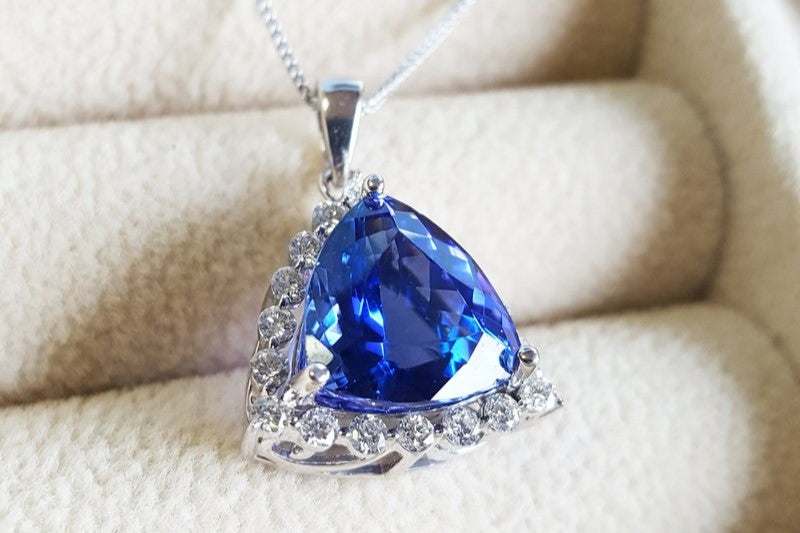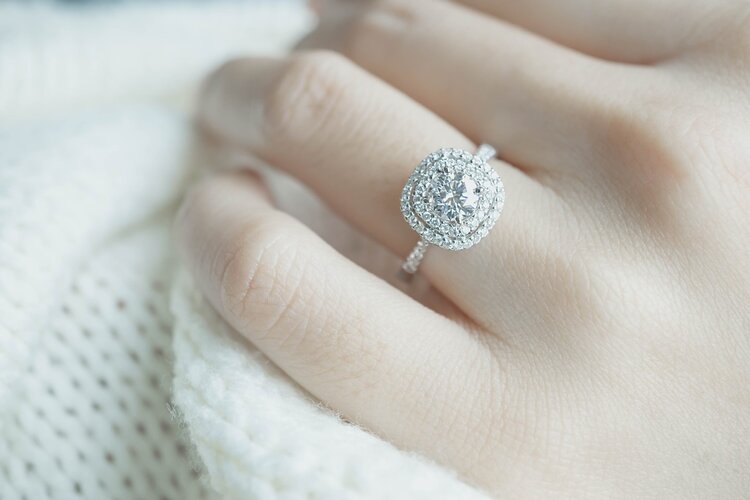
Tanzanite is the official birthstone for December. In many cultures, people believe that wearing tanzanite can bring luck and fortune to their lives. It's also believed that tanzanite will bring peace to relationships and help you find true love. Some people believe that wearing tanzanite can help protect them against illness or injury during travel or while performing tasks like driving a car or flying in an airplane. In the next sections, we will learn many things about tanzanite.
Meanings and History of Tanzanite
Tanzanite is a relatively new gemstone to the market, but it has quickly become one of the most popular gems in the world. The name "tanzanite" was given to this gemstone because it was discovered in Tanzania by British geologist Sir Charles William Wyndham Thomas Currey during a search for copper ore deposits in 1967. The discovery occurred during an expedition led by British geologist Peter J. Leger, who wanted to find a blue alternative to lapis lazuli. Currey originally thought that he had discovered sapphire when he found some transparent blue rocks that were similar to sapphire except for their lack of hardness; however, further testing revealed that they were actually zoisites.
The earliest known use of tanzanite is said to date back to ancient Egypt where it was used as a healing stone and talisman to protect against evil spirits. Tanzanite was also used as decoration for jewelry, amulets and statues during this time period. Today, tanzanite is still used for healing purposes in some cultures like India and Sri Lanka where it's believed that wearing tanzanite can bring good luck and prosperity. Tanzanite is also believed to help people overcome bad habits like smoking or drinking alcohol because it encourages self-confidence and self-esteem.
Tanzanite Characteristics and Color
Tanzanite is a variety of the mineral zoisite, which is a calcium aluminum silicate mineral. It is often found as a brown-to-blue-to-purple colored stone, although rarer shades such as green, yellow and red can also be found. Tanzanite gets its beautiful hue from a combination of iron and aluminum in its chemical composition. It ranges in color from blue to violet to purple, and can sometimes even resemble aquamarine. The stone can also be found in other colors such as green, reddish, brownish, or yellowish tones.
A unique characteristic of tanzanite is Tanzanite is it changes color depending on the light source used to view it. Under daylight conditions tanzanite will appear blue; under incandescent light conditions it will appear purple; under fluorescent light conditions it will appear greenish blue or bluish violet; under candlelight conditions, it will appear violet; under sunlight or artificial light with ultraviolet component, it will appear violet bluish or violet.

Tanzanite Durability
The durability of Tanzanite is very good. It is very hard, with a rating of 7 on the Mohs hardness scale. This makes it harder than other popular gems such as Sapphire, Ruby and Emerald. Although it can be scratched by harder materials such as Quartz and Topaz, it is unlikely to be damaged by everyday use or normal wear and tear. The only real threat to your tanzanite jewelry is heat damage from an open flame or stovetop burner, which can cause cracking and discoloration of your stone.
Tanzanite is rare and expensive
Tanzanite is an extremely rare gemstone. It is known to be one of the most sought-after colored stones on earth and is considered an investment-grade material due to its scarcity in nature. Tanzanite is mined deep underground at an elevation of around 3,000 feet above sea level. Most stones come from Tanzania and Zaire, with small amounts being produced in Kenya and Mozambique. The majority of tanzanite mined is used to create jewelry, but some are used for industrial purposes or as collector specimens.
Tanzanite is also one of the most expensive gems on Earth. In fact, it’s one of the most expensive gemstones in the world, according to International Colored Gemstone Association (ICA). This stone is more expensive than diamonds and less common than other gems such as rubies or sapphires. It's also harder than most precious stones, making it highly durable. The rarest and most valuable shade of tanzanite has an intense violet color with bluish overtones known as "Royal Blue." This color grade is extremely difficult to find but can command extremely high prices when available for sale.
How to take care of your Tanzanite
As with all gems, tanzanite needs to be cared for properly. Tanzanite is sometimes treated with oil or heat to enhance its color or change its appearance. This treatment can damage the stone over time, so if you're looking for natural tanzanite without treatment, make sure that your jeweler can confirm this before purchasing anything.
Tanzanite is sensitive to heat and light, so avoid exposing your ring or necklace to sunlight or heat when possible. If you have an engagement ring with tanzanite, make sure that it comes with a protective setting and care instructions from your jeweler.


